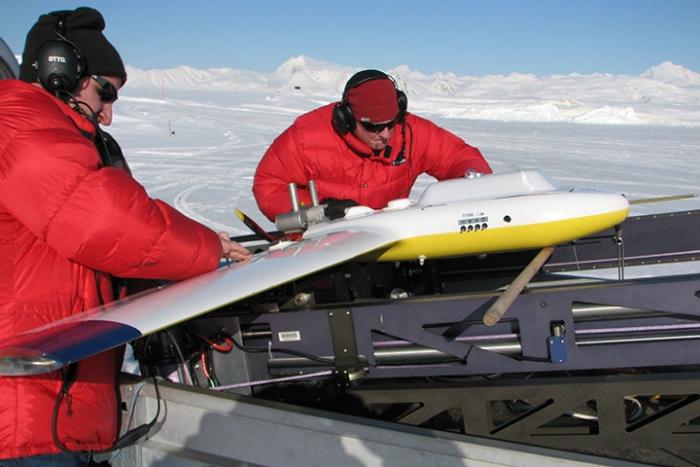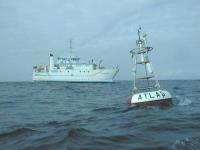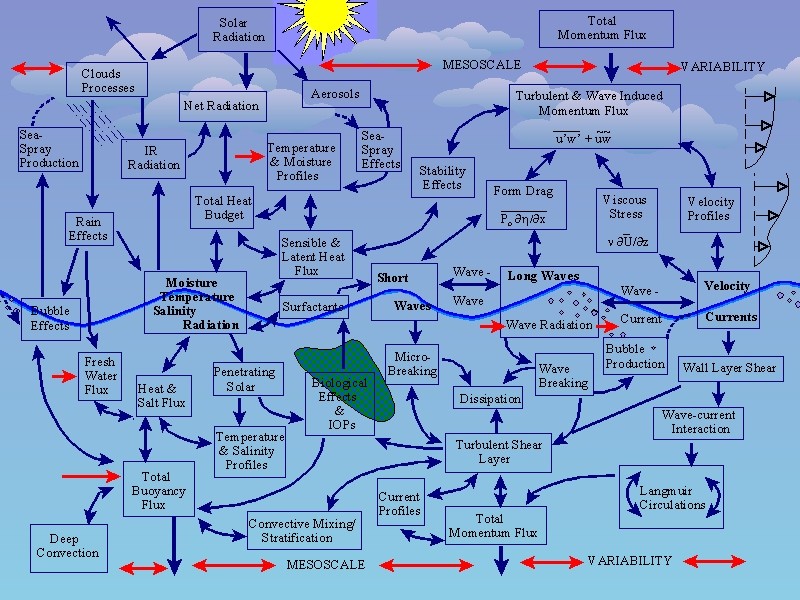“OASIS—The Observatory for Air-Sea Interaction Studies”
Chris Zappa
Originally presented 21 Apr 2018

Chris Zappa is a Lamont Associate Research Professor who studies ocean-atmosphere interface processes. These include wave dynamics and wave breaking; effect of near-surface turbulence on heat, gas, and momentum transport; infrared remote sensing; upper-ocean processes; coastal and estuarine processes; and other air-sea interactions. Chris leads “OASIS–The Observatory from Air-Sea Interaction Studies”.
OASIS is a multi-institution, multi-national program seeking to understand better the dynamics of the atmosphere-ocean boundary through the synergy of scientists from many different areas of expertise. Group members develop and deploy instruments, including infrared, multispectral, and polarimetric cameras, on fixed and mobile platforms, such as ships, aircrafts, buoys, and underwater autonomous vehicles.
Study areas range from laboratory wind-wave tanks to local rivers and estuaries, to shelf seas and polynyas, to open ocean from the poles to the equator. This research will assist in developing a quantitative understanding of the ocean-atmosphere coupling will greatly increase understanding of marine storms, ocean waves, upper ocean circulation, climate change and their impact on the physics, chemistry, and biology of the oceans.
View the introductory slide show (pptx) (pdf)
View Chris’s slides show
Chris also provides E2C with two movies showing aspects of his field research:
Drone flying
R/V Falkor UAV (below)
Related News Stories
“New Project Puts Drones to Work Studying Sea Ice Change” (Dec 2016)
“Exploring Our Changing Earth in Real Time” (Jan 2017)
Selected Resources
MIT PAOC (Program in Atmosphere, Ocean, and Climate) Air-Sea Interactions
NOAA PMEL (Pacific Marine Environmental Laboratory) Ocean Carbon Uptake
NOAA ESRL (Earth Systems Research Lab) Air-Sea Interactions
NOAA Global Tropical Moored Buoy Array

NASA “Aquarius Makes First Ocean Salt Measurements”

Artist’s conception of the Aquarius satellite (https://www.nasa.gov/topics/earth/features/pia13971.htmlaaa)
NASA Future Missions PACE (Plankton, Aerosols, Clouds, ocean Ecosystem”
Rahlff, J. et al. (2017) SISI: A New Device for In Situ Incubations at the Ocean Surface
Selected Educational Activities
SERC/Ladochy and Ramirez “Air-Sea Interactions Activities in Oceanography”
SERC/Dahlman “Hot Water and Hurricanes”
Euro Argo “Biological ARGO Floats”
Euro ARGO “LIght Zones in the Ocean”

MORE WILL BE POSTED SOON

